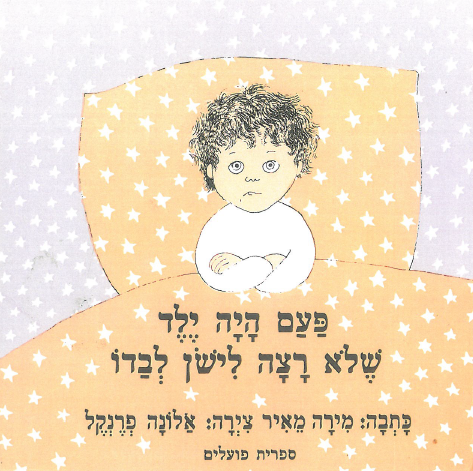Dear Parents,
Many children find it difficult to go to bed alone. The transition from daytime to nighttime is not an easy one. It requires us to part from the people we had spent the day with, and from the various activities in which we had engaged, calm down, and enter dream world.
Both parents and children often look for ways by which to alleviate the shift. Jewish tradition also makes reference to the transition between daytime and nighttime, accompanying it with prayers and wishes. The little boy in the story finds the right way for him to go to bed on his own. For several nights he undergoes a personal process, until he is finally able to sleep alone all night.
Enjoy reading the book and discussing it together!
Mira Meir [1932–2016]
An Israeli author, poet and editor, Mira Meir was born in Poland and immigrated to Israel in 1939. Having completed her IDF service, she joined Kibbutz Nachshon, where she raised her family and lived to her dying day. Meir wrote stories and poems for both children and adults, some of whom are among Israeli children's favorite books. For 41 years she edited books for children and young adults at Sifriyat Poalim Publishing House, accompanying and guiding new authors and illustrators, who had, in time, become well-known and loved. Mira Meir has won many awards for her books, among them the Andersen Award, Zeev Award for lifetime achievement, and Minister of Education's Award.





